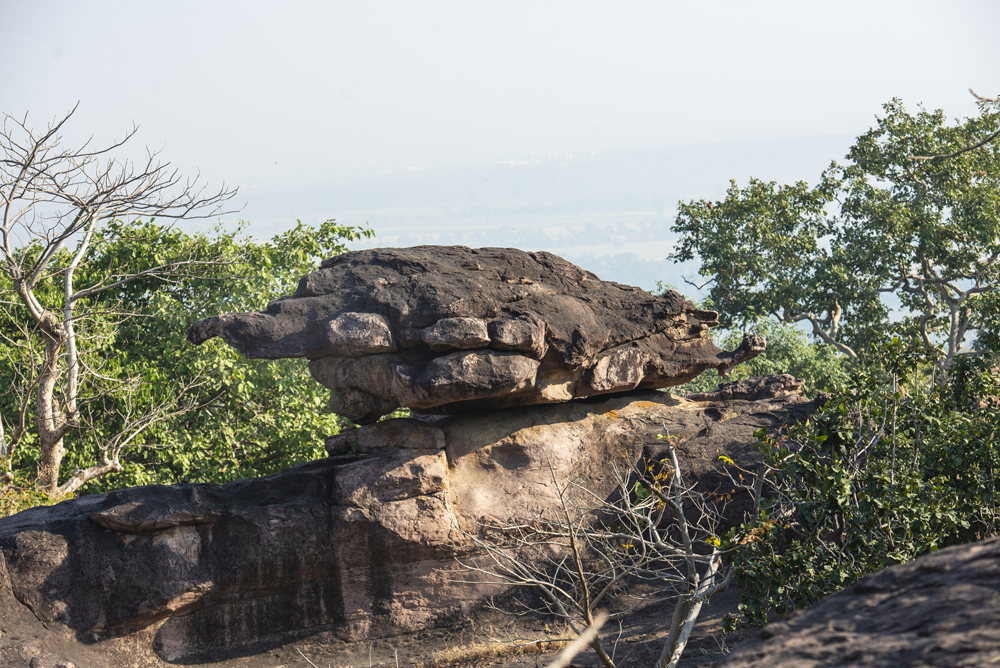Bhimbetka in Madhya Pradesh, India is an archaeological treasure trove, renowned for its extensive collection of prehistoric cave paintings. Situated within the Vindhya Range, the site contains over 750 rock shelters distributed over an area of 10 kilometers. The rock shelters exhibit paintings that date back to the Paleolithic period, with some believed to be as old as 30,000 years. This panoramic display chronologically traces human life and the evolution of the Indian subcontinent's culture through the ages. In 2003, it was declared a UNESCO World Heritage site, gaining prominence for its historical significance. The art in Bhimbetka is predominantly in red and white with occasional use of green and yellow. The themes depicted are varied, including scenes of hunting, dancing, music, horse and elephant riders, animal fights, honey collection, decoration of bodies, disguises, masking, and household scenes. Animals such as bisons, tigers, lions, wild boars, elephants, antelopes, dogs, lizards, and crocodiles have been abundantly depicted in some caves. Today, Bhimbetka is an invaluable insight into prehistoric life and an essential destination for archaeologists, historians, and tourists alike.

